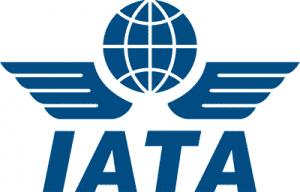Manu frequently seen birds and animals
While Tambopata is excellent for bird watching, with nearly 600 species, Manu enjoys an almost mythical reputation among birdwatchers. And it should: it has the highest concentration of birds on the planet. In addition to its many thousands of plant species, more than a dozen species of monkeys and hundreds of mammals, the Manu Biosphere Reserve contains some 1,000 species of birds, including seven species of colorful macaws. That is more than half of the bird species in all of Peru, one of the main countries in the world (along with Colombia and Indonesia) for the bird species registered within its borders. It’s more species found throughout Costa Rica, and it’s one in nine birds in the world! The forests of western Amazon enjoy the highest density of birds per square mile of any on earth. The immense variety of birds is due to the diversity of altitudinal zones, habitats and ecosystems disseminated by Manu, which encompasses the cloud forest and the tropical forest of the high and lowlands. In addition, Manu shines with very different types of forests, lakes and microclimates. From the mountains of the Andes that surround Cusco, the road to Manu collapses to an amazing 4,000 meters (13,120 feet) to the dense tropical forests of the Amazon basin. For every 1,000 m (3,280 feet) of change in elevation, the lives of native birds change so dramatically. The winding road near Cock-of-the-Rock Lodge has been called “the best road in the world” by the leading bird tour companies. In visits of only 2 to 3 weeks in Manu, dedicated birdwatchers have recorded amazing 500 species. Birdwatchers can expect to come in contact with the quetzals, toucanets, tanagers and the famous Andean roosters of a bright red color in their numerous leks. Also of interest to birdwatchers, among many dozens more, the blue-headed macaw, the white-cheeked tody tyrant, the bamboo antshrike and the Manu anthill.
The highlight of most of the visits organized to Manu is the network of trails and lakes of Cocha Salvador (the largest of the skeletons of Manu, 3.5 km long) and Cocha Otorongo, both jungle areas abundant in animals , water and birds. The latter is best known for the giant otters (see box, p.557) that live there; Due to this, canoeing is not allowed, but there is a floating platform that can be maneuvered to observe the otters fishing and playing from a safe distance (although your guide has to set aside a time for this): 30-50m is enough Good to Observe and photograph, however, given that it is the most popular tourist area in Manu, it is likely that you will meet other groups and there may be strong competition to access the platform. Other fauna that must be taken into account include the abundant alligators, including the white caimans of two to three meters and the rarest ones of between three and five black meters, and generally you can see several species of monkeys (including the dark tigers, the woolly monkeys, red howlers, brown capuchins and the largest spider monkeys, known locally as maquisapas). Sometimes large mammals such as the capybara or white-lipped peccaries (called sajinos in Peru) also hide in the understory.
Blanquillo Macaw and Parrot Lick, the subject of a 1994 National Geographic report and later television special about macaws, is the most famous collpa in Manu. Visits to Collpa are only during the dry season and are best from July to September; Macaws do not feed on clay during the month of June, for unknown reasons.
For flora and fauna, the Manu is practically invincible in South America, home to 20,000 types of vascular plants (it was found that an area of five square kilometers contains 1147 species of vascular plants, almost as many as in the whole United Kingdom), with more than 5000 plants with flowers, 1200 species of butterflies, 1000 types of birds, 200 types of mammals and an unknown amount of reptiles and insects. Rich in macaws, lagoons of marauding otters and jaguars, there are thirteen species of monkeys and seven species of macaws in Manu, and still contains other species in serious danger of extinction, such as the giant otter and the black caiman (Melanosuchus). Niger).




